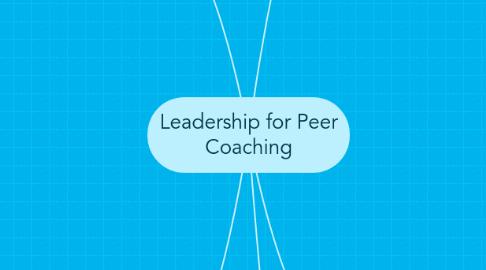
1. Technological Pedagogy Content Knowledge
1.1. Digital technologies are rapidly changing but usable in many different ways = difficult to integrate
1.1.1. Some technology more suitable in certain ways than others
1.1.2. Need to understand potentials and restraints
1.1.3. Teachers have inadequate knowledge of educational technologies from degree
1.1.3.1. I agree! I had NO training in educational technology that was helpful in my career.
1.1.4. Time intensive to learn new technologies on top of other job related tasks
1.1.4.1. This is my biggest obstacle! This is why I wish we did have a full time Ed. Tech. Coach
1.2. 3 core coponents: content, pedagogy, and technology
1.2.1. Content: knowledge of subject matter
1.2.2. Pedagogy: Knowledge of processes and methods of teaching and learning
1.2.3. Technology: working and thinking about technology tools and resources
1.2.4. Interaction of all three is extremely important
1.2.5. "TPACK is the basis of effective teaching with technology, requiring an understanding of the representation of concepts using technologies; pedagogical techniques that use technologies in constructive ways to teach content; knowledge of what makes concepts difficult or easy to learn and how technology can help redress some of the problems that students face; knowledge of students’ prior knowledge and theories of epistemology; and knowledge of how technologies can be used to build on existing knowledge to develop new epistemologies or strengthen old ones." Koehler, M. J., & Mishra, P. (2009)
2. Technology, Coaching, and Community
2.1. "When teachers do not effectively integrate all aspects of technology in the educational process, today’s students are not fully engaged and miss out on authentic learning experiences emphasizing collaboration, creativity, and innovation. This leads to students who are unprepared to be productive digital-age citizens and participants in the highly competitive, global, digital workplace." Beglau, M., Hare, J.C., Foltos, L., Gann, K., James, J., Jobe, H., Knight, J., Smith, B. (2011)
2.2. "Just giving a teacher a technology tool and expecting him or her to maximize its learning potential is a strategy destined for failure."
2.2.1. I couldn't agree more! We need time to explore it and to openly discuss it's potential to build our confidence using it in the classroom.
2.3. PD needs to include technology, coaching, and social learning
2.3.1. Build confidence
2.3.2. Improves effectiveness of creating technology- rich learning environments
2.3.2.1. NETS Standards (personally never heard of before this program)
2.3.3. Benefits students
2.3.4. PD is not one size fits all
2.3.4.1. I consider this to be a downfall to the PD they try to offer our entire school or district. I often find it doesn't apply to my classroom and is a waste of time.
2.4. Coaching needs to be in the proper context, relevant, and ongoing
2.4.1. Observations, surveys, visits
2.4.2. Cognitive Coaching: strategies to reshape thinking and problem solving (through PD)
2.4.3. Instructional Coaching: help districts/schools by determine WHAT to focus on that will serve teachers greatest needs and impact student learning the most
2.4.3.1. I wish we had someone full time to do this for our staff!
2.4.4. Peer Coaching: Training teachers to support peers with tech integration (grant $)
2.4.4.1. 1-3 collaborating teachers at a time to build tech integration (picked with administrator)
3. Partnership Learning
3.1. "A group can start to think as one big mind, one group of differently talented, unique individuals sharing the joy of muddling over a problem." (16) = dialogue
3.2. "Dialogue brings people together as equals so they can share ideas, create new knowledge, and learn." (16)
3.3. Teams need to be able to agree, disagree, and reflect respectfully
3.3.1. I consider myself lucky to be on a 6 person team that operates this way!
3.4. Teachers need to be able to learn a new approach, evaluate their teaching, and reshape as needed.
3.5. Question Recipes
3.5.1. Foster Dialogue
3.5.2. Open Ended & non-Judgemental
3.5.2.1. We learn these sentence stems in leadership PD in our district, specifically as mentor language
3.5.3. Examples: "Tell us more about that..." "What leads you to believe..." "How do you feel about that?"
3.6. Reflection Learning
3.6.1. Promotes application to own work
3.7. Experiential Learning
3.7.1. Learners experience what they are exploring
3.7.2. Most often occurs in PD
3.7.3. I personally enjoy this type of learning
4. NETS-C eBook
4.1. "Technology coaches are broadly defined as those professionals who help educators advance technology use in schools." (p. 3)
4.1.1. Hoping to encourage instructional change
4.1.2. Established relationship of mutual respect essential
4.1.3. Bridge gap between traditional learning and emerging learning landscape
4.2. Essential Conditions
4.2.1. Shared vision between staff
4.2.2. Empowered leaders
4.2.2.1. Support Policies from district through national
4.2.3. Implementation Plan
4.2.4. Funding
4.2.5. Equitable Access
4.2.6. Skilled Personnel
4.2.7. Ongoing Professional Learning
4.2.8. Tech Support
4.2.9. Curricular Framework
4.2.9.1. Student Centered Learning
4.2.10. Assessment & Evaluation
4.2.11. Engaged Communities
4.3. "NETS standards and fills an important gap in realizing systemic improvement within a learning organization. Research consistently shows that technology adoption requires the presence of pioneers to field-test technologies, contextualize their use for specific purposes, and then help their peers implement them. In schools, technology coaches fill that pioneer role." (p. 6)
5. Development of a Virtual Technology Coach to Support Technology Integration for K-12 Educators
5.1. "Lowther, Inan, Strahl, and Ross (2008) found that including full-time, on-site technology coaches at a school significantly increased teachers’ confidence in integrating new technologies, as well as enhanced teachers’ technology skills." (p. 55)
5.1.1. Staff more confident and empowered using tech
